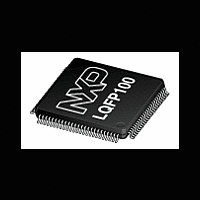LPC2367FBD100 NXP Semiconductors, LPC2367FBD100 Datasheet - Page 18

LPC2367FBD100
Manufacturer Part Number
LPC2367FBD100
Description
The LPC2367FBD100 is a ARM7 microcontroller for embedded applications featuring a high level of integration and low power consumption at frequencies of 72 MHz
Manufacturer
NXP Semiconductors
Datasheet
1.LPC2364FET100.pdf
(69 pages)
Available stocks
Company
Part Number
Manufacturer
Quantity
Price
Company:
Part Number:
LPC2367FBD100
Manufacturer:
TI
Quantity:
160
Part Number:
LPC2367FBD100
Manufacturer:
ST
Quantity:
20 000
Company:
Part Number:
LPC2367FBD100,551
Manufacturer:
NXP Semiconductors
Quantity:
10 000
NXP Semiconductors
[12] If the RTC is not used, these pins can be left floating.
[13] Pad provides special analog functionality.
[14] Pad provides special analog functionality.
[15] Pad provides special analog functionality.
[16] Pad provides special analog functionality.
[17] Pad provides special analog functionality.
7. Functional description
LPC2364_65_66_67_68
Product data sheet
7.1 Architectural overview
The LPC2364/65/66/67/68 microcontroller consists of an ARM7TDMI-S CPU with
emulation support, the ARM7 local bus for closely coupled, high-speed access to the
majority of on-chip memory, the AMBA AHB interfacing to high-speed on-chip peripherals,
and the AMBA APB for connection to other on-chip peripheral functions. The
microcontroller permanently configures the ARM7TDMI-S processor for little-endian byte
order.
The LPC2364/65/66/67/68 implements two AHB in order to allow the Ethernet block to
operate without interference caused by other system activity. The primary AHB, referred
to as AHB1, includes the VIC and GPDMA controller.
The second AHB, referred to as AHB2, includes only the Ethernet block and an
associated 16 kB SRAM. In addition, a bus bridge is provided that allows the secondary
AHB to be a bus master on AHB1, allowing expansion of Ethernet buffer space into
off-chip memory or unused space in memory residing on AHB1.
In summary, bus masters with access to AHB1 are the ARM7 itself, the GPDMA function,
and the Ethernet block (via the bus bridge from AHB2). Bus masters with access to AHB2
are the ARM7 and the Ethernet block.
AHB peripherals are allocated a 2 MB range of addresses at the very top of the 4 GB
ARM memory space. Each AHB peripheral is allocated a 16 kB address space within the
AHB address space. Lower speed peripheral functions are connected to the APB. The
AHB to APB bridge interfaces the APB to the AHB. APB peripherals are also allocated a
2 MB range of addresses, beginning at the 3.5 GB address point. Each APB peripheral is
allocated a 16 kB address space within the APB address space.
The ARM7TDMI-S processor is a general purpose 32-bit microprocessor, which offers
high performance and very low power consumption. The ARM architecture is based on
Reduced Instruction Set Computer (RISC) principles, and the instruction set and related
decode mechanism are much simpler than those of microprogrammed complex
instruction set computers. This simplicity results in a high instruction throughput and
impressive real-time interrupt response from a small and cost-effective processor core.
Pipeline techniques are employed so that all parts of the processing and memory systems
can operate continuously. Typically, while one instruction is being executed, its successor
is being decoded, and a third instruction is being fetched from memory.
The ARM7TDMI-S processor also employs a unique architectural strategy known as
Thumb, which makes it ideally suited to high-volume applications with memory
restrictions, or applications where code density is an issue.
All information provided in this document is subject to legal disclaimers.
Rev. 7 — 20 October 2011
LPC2364/65/66/67/68
Single-chip 16-bit/32-bit microcontrollers
© NXP B.V. 2011. All rights reserved.
18 of 69
















